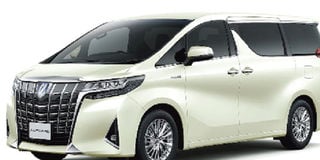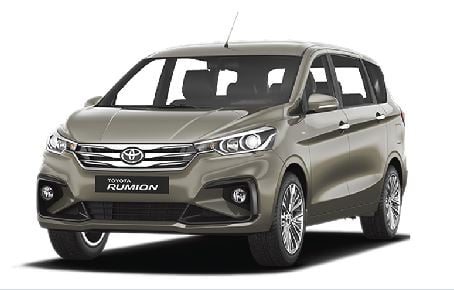The 2018 Alphard is built for work

What you need to know:
- The Alphard enables you to drop down the tables from the seat sides so that you can write or work on your computer.
A number of vans such as the Toyota Regius, Elgrand and the Toyota Super Custom have come and gone. However, since 2002 when the first edition of the Toyota Alphard was produced, the predecessors have been improved in terms of technology over the years.
A case in point is the Toyota Alphard 2018 model executive edition. With a boxy exterior and executive on the interior, the 2018 Alphard executive edition was manufactured with an interior executive lounge suitable for business. It is equally spacious, since it was made to accommodate seven passengers; the driver and co-driver, three seats in the middle row and two foldable seats at the back.
While driving the car through hilly Naguru, a Kampala suburb, I noticed that apart from all seats being able to recline to the required postures, they all have a massaging component that is just turned on by the press on a button, and this comes in handy, especially for long journeys. Additionally, the seats are air conditioned. The middle row seats can be turned to face those at the rear, in case you want to have a meeting in the car.
The 3500cc V6 is suitable for Uganda’s roads since it comes with good traction and a raised suspension through rough roads with potholes as is the case around Kampala Parents’ School in Naguru.
Features
Fitted with a 3500cc V6 petrol engine, the Alphard is a well-balanced van. The Alphard’s 4WD system is automatic and will engage when it detects that there is a lot of wheel spin.
“The Alphard can double as a family and business car. It is an all-round car with an admirable work ethic. You are able to drop down the tables from the seat sides to allow you write or work on your computer.
All seats have plugs for USB cables and a three point plug to charge your laptop or any other electrical gadgets,” says Andrew Kananura, who has had the Alphard for four years.
Similar models of the Toyota Alphards come with 2000cc and 2400cc hybrid respectively but the 3500cc version is more economical compared to other cars of its class or the capabilities it handles.
For instance, it has better fuel consumption, where it covers approximately 12kms per litre of fuel on the highway and approximately nine kilometres per litre for urban drives, compared to a Land Cruiser that accommodates six people, with a fuel tank capacity of 70 litres.

The Alphard is fitted with a 3500cc V6 petrol engine.
Photos | Roland D. Nasasira
Specs
When driving, especially in traffic jam, the Alphard will sound an alarm to warn if it senses that you are driving too close to the car in front of you. It also has the lane departure assist and will equally warn you in case you are driving out of your lane and it is unsafe.
It is a seven seater with 16 cup holders and heads up display. The heads-up display technology displays the speed at which you are driving and navigation routes without getting your eyes off the road, among other kinds of information, all digitally through the windscreen.
Maintenance
Most of the latest cars are considered to be high tech. However, when it comes to service, the Alphard is like most Japanese cars that are generally synonymous with affordable and cheap maintenance.
“Its service is relative to the mileage you cover in a given period. You could cover 10,000kms in a week or in six months, depending on how often you drive it. Its spare parts are readily available on the local market. On average, you will need to spend Shs400,000 for minor service for this car because it runs on modern technology,” says Stewart Kalema, a mechanic in Wandegeya.
Like some cars, one of the most fascinating feature about the Alphard is that it has a glass partition that cuts off communication between the driver and occupants in the backseats. However, you can communicate with the driver via an intercom.
Verdict
Once you are behind the wheel, the Alphard does not feel as big as it looks from the outside. The three litre V6 engine has plenty of power and is quiet, smooth and feels effortless. It can pick up speed surprisingly quickly and without any fuss when required.
Unsurprisingly for a 4WD car weighing two tonnes, there are disc brakes all round. They pull the car up well, but there is almost no pedal feel under braking. I think this is fairly typical for this type of vehicle.




